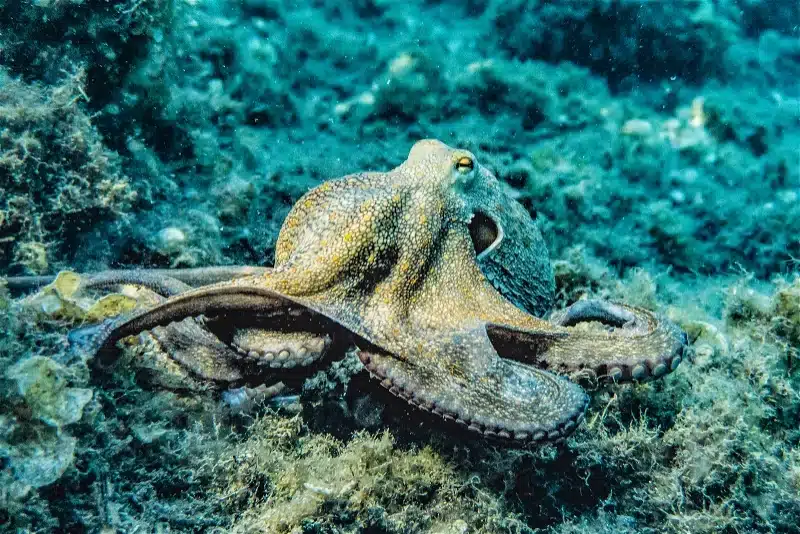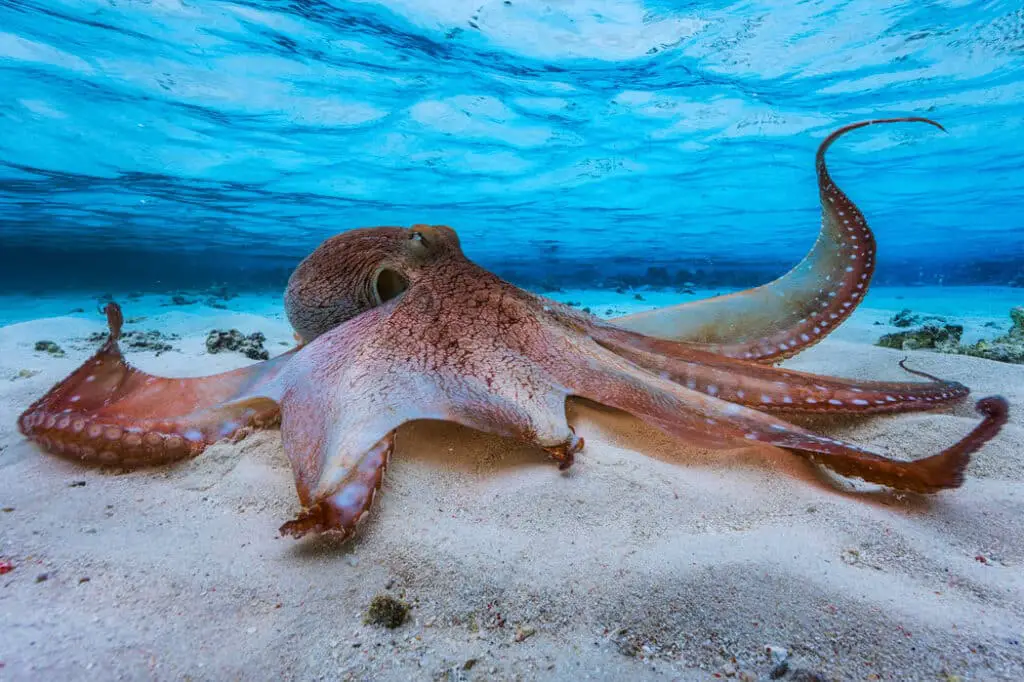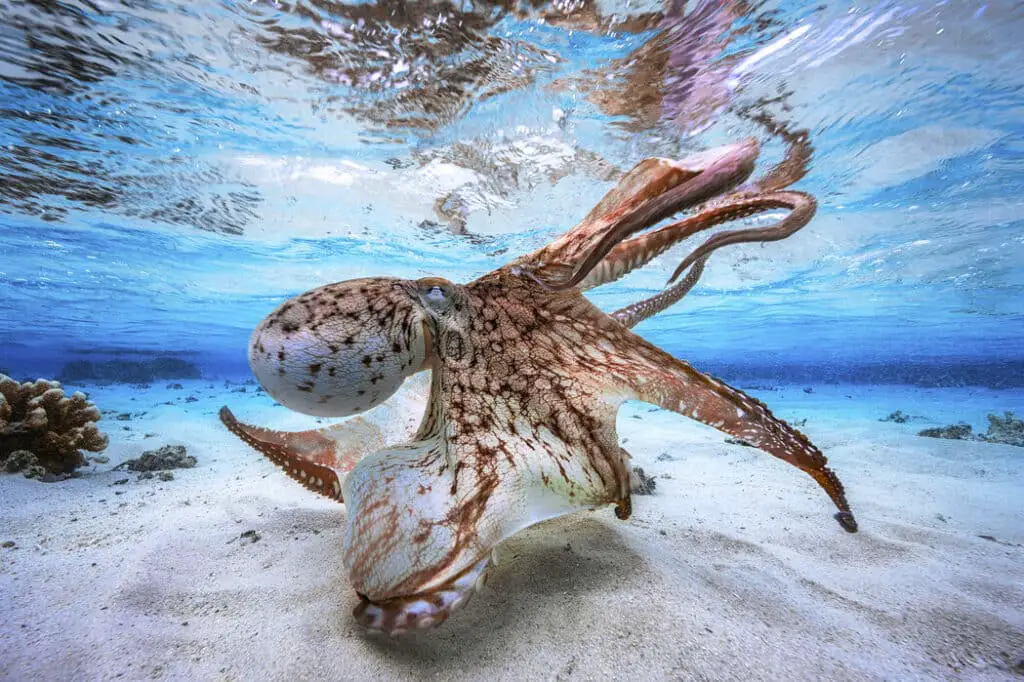Do Octopus Have Tongues

Introduction
Do Octopus Have Tongues: The world beneath the waves holds a multitude of mysteries, and among its enigmatic inhabitants, the octopus stands out as a marvel of evolution and adaptation. These intelligent cephalopods have captured the imagination of scientists and nature enthusiasts alike, with their extraordinary abilities and intriguing behaviors. One of the questions that often arises when delving into the anatomy and biology of octopuses is whether they possess a tongue-like structure, akin to many other animals.
Octopuses are renowned for their complex nervous systems, dexterity, and camouflage capabilities, but understanding their anatomy goes beyond their external appearances. To comprehend the intricacies of octopus feeding mechanisms, we must delve into their internal structures. This quest for knowledge leads us to a curious inquiry: do octopuses have tongues? To answer this question, we will examine the anatomy of these remarkable creatures, their feeding habits, and the unique adaptations that have allowed them to thrive in the marine world.
As we dive into this exploration, we will unveil the fascinating world of octopus biology, shedding light on one of the lesser-known aspects of these captivating animals. Join us on this underwater journey to unravel the mystery of octopus tongues and gain a deeper appreciation for the wonders of the ocean’s depths.

What does octopus tongue look like?
Most octopus have a special, chitinous structure in their mouths called a radula. Radulae are a lot like your own tongue, well, except for one tiny difference: they’re covered in TEETH!
The octopus tongue, known as the radula, is a distinctive and specialized structure that sets it apart from other creatures in the animal kingdom. Rather than resembling a conventional tongue, the radula is a ribbon-like organ equipped with rows of tiny, chitinous teeth. These teeth are backward-curving and serrated, allowing the octopus to grasp and shred its prey effectively. The appearance of the radula can vary among different octopus species, with variations in tooth size and arrangement, depending on their specific feeding habits and prey preferences.
Under a microscope, the radula’s teeth reveal intricate patterns and textures, reflecting the precision and adaptability required for an octopus to capture and consume a wide range of aquatic creatures. Whether hunting crabs, mollusks, or other small marine organisms, the radula is a versatile tool that enables the octopus to manipulate and devour its prey with remarkable dexterity.
The octopus tongue, or radula, is a remarkable anatomical feature characterized by its ribbon-like structure and rows of specialized teeth. Its unique design reflects the adaptability of octopuses as masterful hunters in the intricate underwater world they inhabit.
Do any octopus have teeth?
Because octopuses don’t have any teeth! That doesn’t mean that an octopus can’t bite and chew its food, which is good news for this meat-eating carnivore. Instead of teeth, octopuses have sharp beaks. They use them to break open things like clam and lobster shells so that they can tear out and eat the yummy insides.
Octopuses do have a form of teeth, although they are quite different from what we typically associate with teeth in vertebrate animals like mammals or reptiles. Octopus “teeth” are found in a specialized structure called the radula. This radula is a ribbon-like organ equipped with rows of tiny, chitinous, and backward-curving teeth.
The radula’s appearance can vary slightly among different octopus species, reflecting their specific diets and feeding strategies. These teeth are not used for chewing in the way mammalian teeth are, but rather for grasping and tearing apart prey. The radula serves as a versatile tool that allows octopuses to manipulate and consume a wide variety of marine organisms, including crabs, mollusks, and other small creatures.
This unique dental adaptation showcases the incredible adaptability of octopuses as predators in their underwater habitats. Their radula, though different in structure and function from traditional teeth, is a testament to the evolutionary innovation that has enabled these intelligent cephalopods to thrive and successfully hunt in the diverse ecosystems of the ocean.
What are 5 interesting facts about octopus?
10 Astounding Facts About Octopuses
- Octopus arms have a mind of their own
- They have (literally) a lot of heart
- Males die after mating, too
- They’re masters of camouflage
- Females give their lives to protect their eggs
- They’re smart enough to use tools
- They sometimes build underwater cities.
Octopuses are fascinating creatures with a host of intriguing traits and behaviors. Here are five interesting facts about octopuses:
- Exceptional Intelligence: Octopuses are renowned for their high level of intelligence. They have complex nervous systems and can solve puzzles, demonstrate problem-solving skills, and even exhibit short-term and long-term memory. Some species have been observed using tools, such as coconut shells, for shelter.
- Masters of Camouflage: Octopuses are experts in camouflage and mimicry. They can change their skin color, texture, and even patterns to blend seamlessly with their surroundings. This incredible ability helps them evade predators and ambush prey.
- Jet Propulsion: Octopuses move in a unique way by expelling water through a siphon. This jet propulsion system allows them to swiftly swim away from danger or propel themselves toward prey. It’s a remarkable adaptation for an animal without a rigid skeleton.
- Regeneration: Octopuses have impressive regenerative abilities. They can regrow lost limbs, and in some cases, even a severed arm can continue to exhibit independent behavior. This remarkable regrowth helps them recover from injuries and adapt to their environment.
- Short Lifespan and Semelparity: Most octopus species have relatively short lifespans, typically ranging from one to five years. Additionally, they exhibit semelparity, which means they reproduce only once in their lifetime and often die shortly after laying eggs. This reproductive strategy allows them to invest their energy heavily in caring for their offspring.
These intriguing characteristics make octopuses one of the most captivating and enigmatic creatures in the marine world, continually inspiring researchers and captivating the imaginations of nature enthusiasts.
How many tongues does an octopus have?
Octopuses do actually possess a tongue-like organ in their mouths called the radula, which cuts and scrapes prey, especially shellfish. Yet it doesn’t seem capable of taste. The radula acts “more like teeth”, says Bellono.
Octopuses do not have tongues in the conventional sense that mammals or some other animals do. Instead, they possess a specialized structure called the radula, which serves a similar purpose in terms of feeding but is quite distinct in appearance and function.
The radula of an octopus is a ribbon-like organ located inside its mouth. It is covered with rows of tiny, chitinous, backward-curving teeth. While this structure doesn’t resemble a tongue, it is an essential tool for the octopus when it comes to capturing and consuming prey.
The radula is incredibly versatile. Octopuses use it to grasp, manipulate, and shred their food, which can include a wide variety of marine organisms like crabs, mollusks, and other small creatures. The radula’s teeth can vary in size and arrangement among different octopus species, reflecting their specific feeding habits and prey preferences.
Octopuses do not have conventional tongues, but they do possess a highly specialized feeding structure called the radula, which plays a critical role in their ability to hunt and consume a diverse range of underwater prey.
How strong is an octopus mouth?
Let’s use the GPO. The Giant Pacific Octopus’s larger suckers, near the beak and mouth, can hold up to 35 pounds! They are used to pry open and obliterate clams, crabs, and other sea life that should, and would, be hard to eat under normal circumstances.
An octopus’s mouth may appear unassuming, but it conceals a surprisingly strong and efficient tool for capturing and consuming prey. While it’s challenging to quantify the strength of an octopus’s mouth in traditional terms, such as pounds of pressure like we might measure in mammals, their mouths are uniquely adapted to their predatory needs.
The strength of an octopus’s mouth lies in its beak, which is made of hard, chitinous material. This beak resembles that of a parrot and is sharp and robust. It allows octopuses to puncture the exoskeletons of crustaceans and the shells of mollusks, which can be quite resistant.
To feed, the octopus’s beak is used to grasp and tear apart its prey, facilitating the extraction of flesh or soft parts. While the precise force exerted isn’t easily quantifiable, it’s evident that their beaks are effective tools for breaking down the defenses of various marine organisms.
The octopus’s mouth is a testament to its adaptability and predatory prowess in the underwater world. Although their strength doesn’t conform to traditional measurements, their beak’s efficiency in breaking down the defenses of prey demonstrates their remarkable adaptation to the challenges of hunting in the ocean.
Can octopuses taste with their radula?
Octopuses are fascinating creatures known for their remarkable adaptability and complex biology. While they possess a highly developed sense of taste, they do not employ their radula for this purpose. The radula, a specialized feeding organ, is more commonly associated with mollusks like snails and slugs. Instead, octopuses rely on a combination of chemoreceptors located on their suckers and taste buds on their skin to discern the flavors of their surroundings. This unique adaptation allows them to detect chemical cues in the water, aiding in locating food sources and avoiding potential threats.
The octopus’s ability to taste with its skin showcases the incredible diversity of sensory mechanisms in the animal kingdom. This sensory proficiency is vital for their survival, enabling them to navigate diverse underwater environments and make crucial decisions about their interactions with other marine life.
The octopus’s sophisticated taste perception serves as a testament to the ingenuity of evolution, highlighting how organisms can develop ingenious solutions to thrive in their respective ecosystems. In the depths of the ocean, where survival is a constant challenge, the octopus stands as a testament to the wondrous intricacies of life on Earth.
Do different octopus species have variations in their radulas?
Different octopus species exhibit variations in their radulas, reflecting their unique ecological niches and feeding habits. The radula, a specialized feeding organ found in mollusks, plays a crucial role in manipulating and consuming food. In octopuses, it consists of a ribbon-like structure studded with rows of tiny, chitinous teeth. These teeth are adapted to the specific types of prey available in their respective habitats.
For example, octopus species with a diet primarily comprised of crustaceans may have radulas with robust, pointed teeth, ideal for breaking through the hard exoskeletons of their prey. Conversely, species that feed on softer prey like mollusks might possess radulas with finer, rasp-like teeth that are more adept at scraping flesh from shells. Some deep-sea octopuses have radulas adapted for scavenging on carrion, featuring smaller, more widely spaced teeth.
These variations in radula structure reflect the incredible diversity of octopus species and their capacity to adapt to a wide range of marine environments. This adaptability is a testament to the intricate processes of evolution and underscores the importance of specialized anatomical features in facilitating the survival and success of these enigmatic creatures in their respective ecosystems.
What is the beak-like structure in octopuses?
The beak-like structure in octopuses is a formidable anatomical feature that serves as their primary tool for feeding and defense. Located at the center of their soft body, this beak is a hard, sharp, and parrot-like structure made of chitin, a tough organic material. It is the only truly rigid part of an octopus’s body, providing it with a powerful means to capture, dismantle, and consume prey.
The beak is a crucial adaptation for octopuses, enabling them to puncture and break down the tough shells and exoskeletons of their prey, which can include crabs, clams, and various crustaceans. It is also instrumental in defending against potential predators by allowing the octopus to deliver a powerful bite if threatened.
Despite its strength, the beak is not invulnerable, and it can wear down over time. Octopuses have the remarkable ability to regenerate their beaks, ensuring they maintain an effective tool for hunting and self-preservation throughout their lives.
The beak exemplifies the intricate evolutionary adaptations that equip octopuses for survival in diverse marine environments, further highlighting the extraordinary diversity and ingenuity of life beneath the waves.

Conclusion
While we may not find a conventional “tongue” in octopuses as we do in many terrestrial animals, our exploration has shown that these remarkable creatures possess a highly specialized structure called the radula. The radula, although different in form and function from a typical tongue, serves a crucial role in octopus feeding. Its tiny, rasping teeth enable octopuses to grasp, manipulate, and devour a variety of prey, ranging from crustaceans to mollusks, with astonishing precision and efficiency.
Our investigation into the question of octopus tongues underscores the need to look beyond superficial appearances when studying the natural world. It reminds us that nature’s solutions to survival challenges can be extraordinarily diverse and inventive. Octopuses, with their unique adaptations and complex biology, continue to be a source of wonder and inspiration for scientists and nature enthusiasts alike.
We are left with a deeper appreciation for the intricacies of ocean life and the extraordinary adaptations that have allowed octopuses to thrive in their underwater realm. The quest to understand the natural world, no matter how seemingly trivial the question, unveils the extraordinary beauty and complexity that surrounds us.



